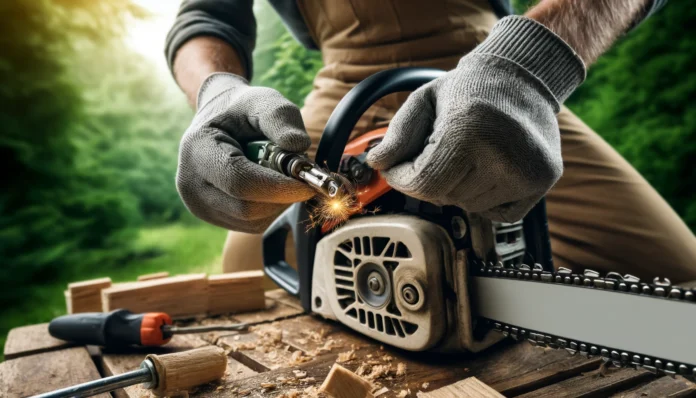A chainsaw is an essential tool for tackling tough garden tasks and saving time, but if you’re new to using one, troubleshooting issues can be daunting. If you’re dealing with a flooded chainsaw, don’t worry – we’ll guide you through the process of getting it running again.
Essentially, a flooded chainsaw means there’s an excess of fuel in the combustion chamber, disrupting the balance between fuel and oxygen, and preventing the spark plug from igniting.
The good news is that flooding is a common occurrence and relatively simple to fix. A strong gasoline smell is a clear sign of a flooded chainsaw, making it easy to diagnose. Learning basic troubleshooting techniques can boost your confidence and help you avoid expensive repairs. Additionally, taking the time to start your chainsaw correctly can minimize the chances of flooding in the first place.
We’ve consulted an expert to explain how to unflood your chainsaw, so you can quickly get back to your outdoor projects.
If, however, your chainsaw is beyond repair or you’re looking to upgrade, consider checking out our guide to the best chainsaws to find the perfect replacement for your needs.
How to unflood a chainsaw: a step-by-step guide
Not sure how to unflood your chainsaw? Follow these simple steps to get it back in working order.
1. Safety first
“Before you begin, make sure you’re wearing safety glasses and gloves,” advises Melody Estes, Landscape Design Gardening Supervisor and consultant at The Project Girl. Then, place your chainsaw on a flat, stable surface for easier handling.
2. Turn off the choke
One of the main culprits for flooding is excessive use of the choke. Make sure to turn it off before moving on to the next steps.
3. Pull the starter rope
Give the starter rope a few swift pulls to clear out any excess fuel. If your chainsaw still refuses to start, it’s possible that the spark plug is wet.
4. Remove the spark plug
“Carefully remove the spark plug from the chainsaw,” says Melody. “You can use the wrench that came with the chainsaw for this.” If you notice the spark plug is wet, thoroughly dry it with a rag.
5. Allow the fuel to burn off
Patience is key when dealing with a flooded chainsaw. “Turn on the saw and let it run for a few minutes until it runs out of fuel or oil,” recommends Melody. Don’t forget to engage the chain brake for your safety.
6. Start the device again
Step away from your workbench before starting the chainsaw. Be sure to follow the manufacturer’s instructions carefully to avoid flooding it again.



